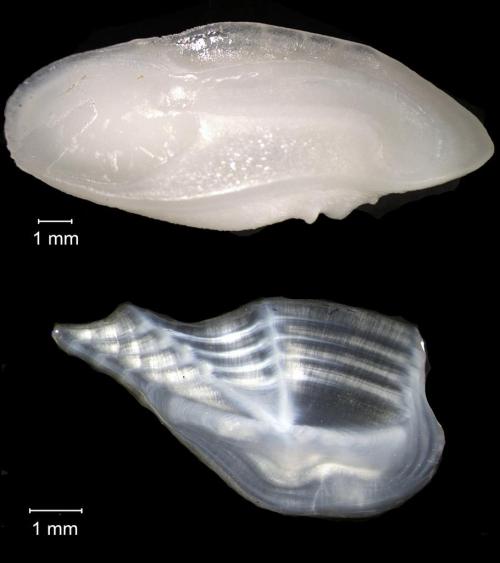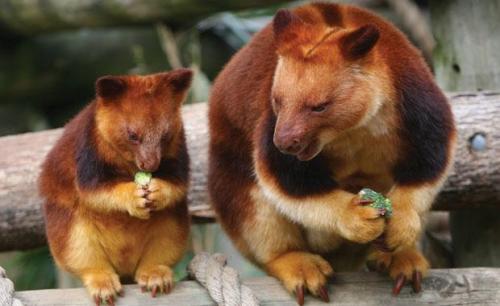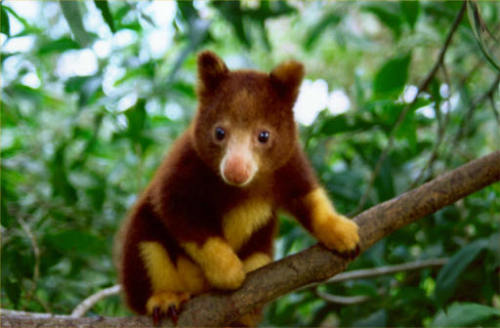Llamaslikesciencetoo - This Is My Side Blog About Science

More Posts from Llamaslikesciencetoo and Others

Come and take a “bite” out of nature & science, attending Explorers Society Members Event. #northmuseum #stemsisters #sharks (at North Museum of Nature & Science)
Astronaut Scott Kelly to Retire from NASA in April
NASA logo. March 13, 2016 NASA astronaut and one-year crew member Scott Kelly will retire from the agency, effective April 1. Kelly joined the astronaut corps in 1996 and currently holds the American record for most time spent in space. After retiring, Kelly will continue to participate in the ongoing research related to his one-year mission. He will provide periodic medical samples and support other testing in much the same way that his twin brother, former astronaut Mark Kelly, made himself available for NASA’s Twins Study during his brother’s mission. “This year-in-space mission was a profound challenge for all involved, and it gave me a unique perspective and a lot of time to reflect on what my next step should be on our continued journey to help further our capabilities in space and on Earth,” Kelly said. “My career with the Navy and NASA gave me an incredible chance to showcase public service to which I am dedicated, and what we can accomplish on the big challenges of our day. I am humbled and excited by new opportunities for me to support and share the amazing work NASA is doing to help us travel farther into the solar system and work with the next generation of science and technology leaders.”
Image above: NASA astronaut Scott Kelly inside the cupola of the International Space Station, a special module that provides a 360-degree viewing of the Earth and the station. Image Credit: NASA. Kelly flew in space four times, beginning with space shuttle Discovery’s trip to NASA’s Hubble Space Telescope on the STS-103 servicing mission in 1999. On his second mission, STS-118, he crossed the threshold of the International Space Station for the first time as commander of space shuttle Endeavour. He returned to the station for a six-month stay in 2010, commanding Expedition 26. A veteran of spaceflight, Kelly accepted the opportunity to participate in NASA’s unprecedented yearlong space station mission, which aimed to expand the boundaries of space exploration beyond low-Earth orbit through the collection of critical data on how the human body responds to extended space missions. On this mission, Kelly eclipsed two American space records. “Records are meant to be broken,” Kelly said. “I am looking forward to when these records in space are surpassed.” Kelly broke the American record for most cumulative time in space during his one-year mission, accruing 520 days. “Scott’s contributions to NASA are too many to name,” said Brian Kelly, director of Flight Operations at NASA’s Johnson Space Center in Houston. “In his year aboard the space station, he took part in experiments that will have far-reaching effects, helping us pave the way to putting humans on Mars and benefiting life on Earth. His passion for this work has helped give hundreds of thousands of people a better understanding of what NASA does, thanks in part to the numerous photos and updates he shared from space. We appreciate his years of service and anticipate many benefits to come from them, thanks to the research he’s supporting.” Related links: One-year crew: https://www.nasa.gov/content/one-year-crew Twins Study: https://www.nasa.gov/twins-study For Kelly’s biography, visit: http://www.jsc.nasa.gov/Bios/htmlbios/kellysj.pdf Image (mentioned), Text, Credits: NASA/Tabatha Thompson/Johnson Space Center/Brandi Dean/Karen Northon. Greetings, Orbiter.ch Full article

Vaterite … from fish ears to crystal lattices
Deep within the ear of a fish you will find a little bone, an otolith. This bone acts as part of the sensory system of the ear, part accelerometer, part gravity sensor, part sound sensor. Otoliths are formed from calcium carbonate minerals, and different species of fish exploit different types of CaCO3 mineral. These CaCO3 “polymorphs” all have the same chemistry, but the arrangements of atoms within the crystal lattice of each are different, just as diamond and graphite are two polymorphs of carbon. Usually, a fish otolith grows as aragonite, sometimes as calcite, a different polymorph of calcium carbonate, and sometime as the third CaCO3 polymorph, vaterite.
Keep reading



(Fact Source)
Follow Ultrafacts for more facts



A study of Saurian morphology: Pseudosuchia (part 2)
Look at that. It’s a croc. With flippers. Yes it did actually exist.
Note to self: learn to schedule these things better. Coming back home after a long day of work to find out I had to do something with a ton of scales is NOT. AT. ALL. FUN. I’ll have to fix dem legs one day but right now I just can’t be bothered.
Edit: oh hey that sucker doesn’t look as bad as I originally had in mind.
- - -
Will Art for Science · Find me elsewhere
So I am not the only one who is still bitter about the Norwegian calf?
Absolutely not. I was anti when baby Norway showed up and as far as I can recall only one other anti actually had the common sense and compassion to actually publicly want that calf rescued. It honestly was the most emotional, frustrating time I had ever had in the captivity debate, and it was absolutely the last straw I could take from the anticaptivity movement, so ultimately that was one of the several pushes I had towards becoming a procap.
For those who missed it, some highlights of Baby Norway’s short life include;
- Orca “experts” / “researchers” flat-out saying that they would not allow the whale to be rescued – “Indeed, put this orca in a tank/aquarium is not even an option!! Norway does not want to see “Morgan’s case” happening again!“
- Morgan, who entered into captivity an absolute skeleton and looked like a neonate at two years old, and is now a beautiful, vibrant, healthy adult female. They don’t want… that to happen again. Okay. Speaks volumes of the anticaptivity agenda, because what did happen with baby Norway, is that she stranded, barely alive after a prolonged period of starvation, and got a round of bullets in her head (exactly like another Norwegian calf that stranded a year before her).
- They completely ignored this fragile starving, injured, INFANT CALF. Oh, but they “talked about a plan” so that’s fine.
- The infant (Let me stress that. This was a neonate calf, days old at best.), visibly starving already when it was first seen, should have at the VERY least been secluded into a small pen and started on a nutritious formula. Instead, they tossed it fish. And I directly quote, “Its body needs milk of course, but at least some calories!”. The optimism is disgusting, considering what this calf was going through, on its own, without help.
- Baby Norway went missing for a while – it wasn’t known if she “found her family” like activists had been hoping, simply wandered off, or if she died. But she showed back up. This time she stranded and she was barely alive. She was given a lethal injection via her dorsal (the only warm place left on her body that had entirely gone cold) and then shot in the head with a shot gun, “just in case”. And that was it.
Baby Norway vocalizing underwater.
Baby Norway’s last moments.
Rest in peace, beautiful little girl.

Shark Documentary: a dead shark!!
Me: oh no
Shark Documentary: something kILLED IT!!
Me: it was an orca
Shark Documentary: WHAt killed this SHARK??!
Me: orca
Shark Documentary: It was not a man!!!
Me: orca
Shark Documentary: *flips a shark upside down*
Me: ok
Shark Documentary: there are some orcas living nearby
Me: yes good
Shark Documentary: what could this mean??
Me: orcas killed the shark
Shark Documentary: did orcas kill this shark??!
Me: yes
Shark Documentary: orcas killed the shark!!
Me: fascinating



The Silent Flying of an Owl.
The video shows how effortlessly an owl fly’s compared to other bird species.
A pigeon that has a relatively large body and small wings needs to flap furiously to produce enough lift. A falcon has large wings that move more aggressively so the bird can gain much faster speeds.
Both birds create large turbulence in the air and noise as a result. Comparatively, the owl is the perfect night time hunter, silently flying through the sky.

Baby parrots look like dinosaurs (Source: http://ift.tt/21GVxRO)
Date Idea: binge watch all the Free Willy movies
-
 brisalitoranea liked this · 1 month ago
brisalitoranea liked this · 1 month ago -
 caixadepapel liked this · 1 month ago
caixadepapel liked this · 1 month ago -
 echoesofvril liked this · 2 months ago
echoesofvril liked this · 2 months ago -
 awitchescellardoor reblogged this · 3 months ago
awitchescellardoor reblogged this · 3 months ago -
 dolunayligecee liked this · 3 months ago
dolunayligecee liked this · 3 months ago -
 benidesevinlayn reblogged this · 3 months ago
benidesevinlayn reblogged this · 3 months ago -
 benidesevinlayn liked this · 3 months ago
benidesevinlayn liked this · 3 months ago -
 zamazingost liked this · 3 months ago
zamazingost liked this · 3 months ago -
 miniipekka reblogged this · 3 months ago
miniipekka reblogged this · 3 months ago -
 miniipekka liked this · 3 months ago
miniipekka liked this · 3 months ago -
 onyx00100 reblogged this · 3 months ago
onyx00100 reblogged this · 3 months ago -
 princeofautumn liked this · 3 months ago
princeofautumn liked this · 3 months ago -
 starsprites reblogged this · 3 months ago
starsprites reblogged this · 3 months ago -
 brs2no reblogged this · 4 months ago
brs2no reblogged this · 4 months ago -
 lenouveaucirque liked this · 4 months ago
lenouveaucirque liked this · 4 months ago -
 otherworlder reblogged this · 4 months ago
otherworlder reblogged this · 4 months ago -
 ineedanameblog reblogged this · 4 months ago
ineedanameblog reblogged this · 4 months ago -
 iamthatswimmerguy reblogged this · 4 months ago
iamthatswimmerguy reblogged this · 4 months ago -
 moonlight-pisces reblogged this · 4 months ago
moonlight-pisces reblogged this · 4 months ago -
 sweetspicyma liked this · 4 months ago
sweetspicyma liked this · 4 months ago -
 triplemj reblogged this · 5 months ago
triplemj reblogged this · 5 months ago -
 univisceral reblogged this · 5 months ago
univisceral reblogged this · 5 months ago -
 univisceral liked this · 5 months ago
univisceral liked this · 5 months ago -
 mannnwe reblogged this · 5 months ago
mannnwe reblogged this · 5 months ago -
 rexriggle liked this · 5 months ago
rexriggle liked this · 5 months ago -
 reesign reblogged this · 5 months ago
reesign reblogged this · 5 months ago -
 tongsontongues reblogged this · 5 months ago
tongsontongues reblogged this · 5 months ago -
 csveu reblogged this · 5 months ago
csveu reblogged this · 5 months ago -
 chico-espacial reblogged this · 5 months ago
chico-espacial reblogged this · 5 months ago -
 chico-espacial liked this · 5 months ago
chico-espacial liked this · 5 months ago -
 keroscorner reblogged this · 5 months ago
keroscorner reblogged this · 5 months ago -
 odinsguy liked this · 5 months ago
odinsguy liked this · 5 months ago -
 phresh-souls reblogged this · 5 months ago
phresh-souls reblogged this · 5 months ago -
 mateomateomate liked this · 5 months ago
mateomateomate liked this · 5 months ago -
 i-want-electras-heart reblogged this · 5 months ago
i-want-electras-heart reblogged this · 5 months ago -
 onceuponadumbass liked this · 5 months ago
onceuponadumbass liked this · 5 months ago -
 mexicanjesuschrist reblogged this · 5 months ago
mexicanjesuschrist reblogged this · 5 months ago -
 mexicanjesuschrist liked this · 5 months ago
mexicanjesuschrist liked this · 5 months ago -
 gayestginger reblogged this · 5 months ago
gayestginger reblogged this · 5 months ago -
 gayestginger liked this · 5 months ago
gayestginger liked this · 5 months ago -
 solongandsolost reblogged this · 5 months ago
solongandsolost reblogged this · 5 months ago -
 toxicfaggot reblogged this · 5 months ago
toxicfaggot reblogged this · 5 months ago -
 toxicfaggot liked this · 5 months ago
toxicfaggot liked this · 5 months ago
Mainly interested in ecology, but also the entirety of science.
179 posts